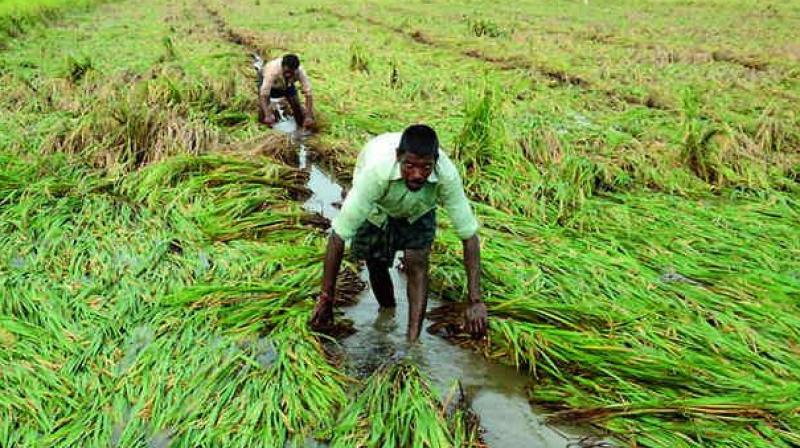Paddy output set to rise in Visakhapatnam with good rains

Visakhapatnam: Bolstered by substantial rains brought by the South-West monsoons last month, farmers are going in for increased paddy cultivation in Visakhapatnam district besides oil seeds and cash crops. The monsoon, which normally continue from June to September brought around 224.72 mm of rainfall last month, as against the normal of 128.8 mm, an increase of 74 per cent. In 2016-17, June recorded a rainfall of 168.9 mm.
According to forecast, this month too the rainfall could be a notch higher than the normal 197.3 mm. “We are expecting paddy production to increase from 3.6 lakh tonnes last year to over four lakh tonnes, as farmers are switching over to paddy. The district, however, faces a constraint in limitations to the extent of cultivation that is very limited. This is due to limitations of area to be covered, availability of assu-red water, increasing urb-anisation and rising land values,” joint-director, agriculture, V. Satyanarayana, told this newspaper.
Mr Satyanarayana will hand over the charge as the joint-director on Thur-sday to take up his new assignment as project director of Agricultural Technology Management Agency (ATMA) in Guntur district. Paddy, the mainstay of farm production in the district, is likely to see an area of coverage of over 1.18 lakh hectares in the district this year, as against the normal one lakh hectares.
Coverage of coarse grains, including ragi and millets, is also projected to go up from the normal area of 39,000 hectares to over 43,000 hectares. “We will maintain the normal paddy yield of 4,000 kg to 4,200 kg per hectare this year. However, the yield in the hill arrears has gone down to 1,800 kg from 2,000 kg per hectare due to poor agricultural management practices. We are campaigning for better practices in those areas,” Mr Satyanaryana said.
The department has also stepped up efforts to encourage inter-cropping in the wake of the healthy monsoons. “Inter-croppi-ng is at a very low level in the district at present. It will be hardly 2,000 hectares. We are trying to incr-ease this to 5,000 hectares through awareness campaigns,” he pointed out.

